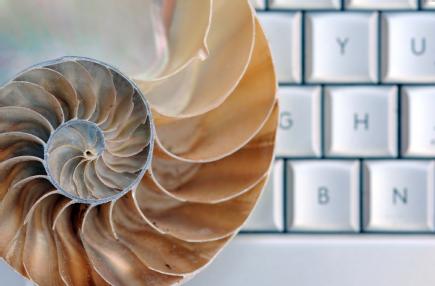Warwick's supercomputer seeks way to mimic mollusc shell
 One of the first tasks for Warwick’s new £1.3 million supercomputer is to use its monster megabytes to analyse the natural properties of the tiny mollusc shell.
One of the first tasks for Warwick’s new £1.3 million supercomputer is to use its monster megabytes to analyse the natural properties of the tiny mollusc shell.
The humble mollusc shell is made up of only one mineral: calcium carbonate, yet the combination of that plus other enzymes and proteins give it remarkable properties in terms of strength while remaining incredibly light.
By modelling the process of its construction on the computer, scientists from the University of Warwick are hoping to guide future development of materials which replicate these natural properties in a synthetic format. It could revolutionise building materials in the future and even improve synthetic bone substitutes for use in operations such as hip replacements.
In their quest to fathom out how to mimic mother nature, mathematicians, physicists, chemists and biologists are using the enormous capacity of the super computer to run models and analysis which is speeding up their research considerably.
Housed in the Physical Sciences Building on campus the computer, which is equivalent in size to eight tall filing cabinets, stands at more than six feet and has some 3,000 ‘cores’. Professor Mark Rodger, Director for the Centre for Scientific Computing, explained: “When you think that your PC or laptop at home is generally dual core (only two cores), it puts into perspective the potential capacity of just how powerful this computer is.”
There are only a handful of computers with this capacity in the country with Warwick’s model being one of the largest at any HE institute in the UK.
“This computer is capable of running highly complicated models and analysis in a fraction of the time other computers would take. So now, what used to take a week to run, we can obtain overnight. This has a huge benefit in terms of cost and time and will be incredibly valuable to the service Warwick can offer its academics.
“The other benefit is that we are able to support local SMEs who may have the opportunity to access our expertise and this analytical resource – something that very few commercial organisations would be able to do and which demonstrates the University’s commitment to support and encourage local industry,” added Professor Rodger.
Notes to Editors: For further information or to arrange an interview with Professor Mark Rodger, contact Kate Cox, Communications Manager on +44 (0)2476 574255/150483, m:+44(0)7920 531221 or kate.cox@warwick.ac.uk.
A choice of shell photos are available to download from our media library:
http://www2.warwick.ac.uk/services/communications/medialibrary/images/november2011/shell_08.jpg
http://www2.warwick.ac.uk/services/communications/medialibrary/images/november2011/shell_09.jpg
http://www2.warwick.ac.uk/services/communications/medialibrary/images/november2011/shell_03.jpg
http://www2.warwick.ac.uk/services/communications/medialibrary/images/november2011/shell_01.jpg
